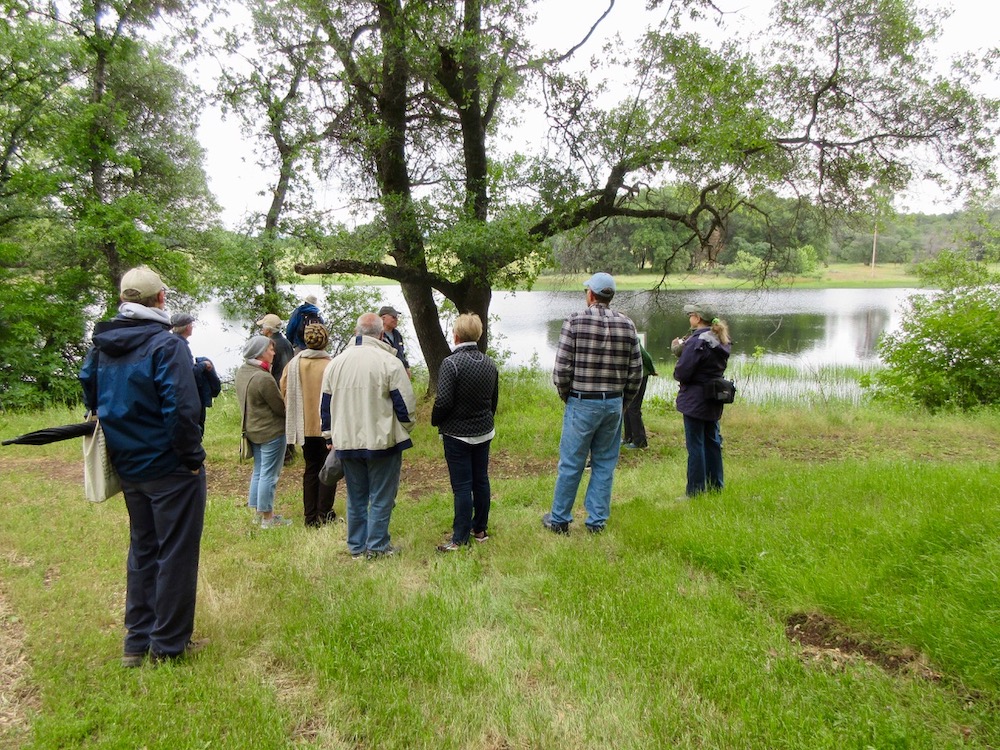Wakamatsu Farm in Placerville: A Hidden Historic Gem
By by Keli Gwyn
Many people will converge on Placerville from June 6-9,with a special destination in mind—Wakamatsu Farm. They’ll be coming to celebrate the 150th anniversary of the Japanese immigration to the United States.
Being a local resident, I was able to join a public tour and get a preview of what’s to come. A half dozen knowledgeable docents, eager to get in some practice before the big event, imparted the history of the Wakamatsu Tea and Silk Farm Colony as we strolled the extensive grounds, stopping at various points of interest.

U.S. Commodore Matthew Perry’s attempts throughout the 1860s to encourage Japan to engage in trade with the West sparked the Boshin War in 1868. Those in the north loyal to the Tokugawa Shogunate, eager to maintain their isolation, fought rebels in the south open to change.
During the civil war that erupted in 1868, an enterprising German named John Henry Schnell, who was living in Japan, supplied firearms to the daimyo (local lord) at Aizu Wakamatsu. When the war ended the following year, Schnell formed a group of twenty-two Japanese—including craftsmen, farmers, a doctor and one member of the samurai class—and headed to California.
Schnell and those first Japanese immigrants arrived in the Gold Hill area on June 8, 1869 and purchased 160 acres of farmland for $5,000 from the Graner family. The colonists used the thousands of tea plants, mulberry plants, and silk worms they’d brought with them to start their tea and silk operation, named after Schnell’s Japanese hometown.

Sadly, the dream of harvesting tea and silk wasn’t to be realized. California’s Mediterranean climate, with its dry summers, didn’t provide the water the tea plants needed. Schnell was forced to purchase water from the local mining ditch, but the iron sulfate in it killed the fledgling plants. This setback, coupled with the failure of the labor contract Schnell had forged with Japan, led him to leave his wife and daughters behind while he went back to secure more funds. Sadly, he was never heard from again.
The Colony collapsed, and the Japanese dispersed. All but two of them. Matsunosuke Sakurai and Okei Ito had nowhere to go. Both went to work for the Veerkamp family, friends of the Graners to whom the land had previously belonged. Matsunosuke worked for the Veerkamps, marketing produce, while Okei-san watched their children.

Okei, who was only seventeen when she arrived in California, contracted a fever two years later and died. Matsunosuke purchased a headstone for her, a replica of which has replaced the original that cracked. Japanese people, along with others, come to Wakamatsu Farm to pay their respects at what is believed to be the burial site of the first Japanese woman on American soil.
Our tour ended at the historic Graner farmhouse, shaded by a 150-year-old Japanese Keyaki tree. Photos of some colonists and other artifacts can be seen on the main floor. The upstairs rooms depict the different inhabitants, from the Graner family to the Japanese colonists to the Veerkamps, who bought the property in 1871 and farmed it until the American River Conservancy acquired it in 2010.

After our tour, my husband Carl, our friend Phil, and I visited the Wakamatsu historic landmark plaque and memorial garden located at the corner of Gold Trail School in the shadow of Okei-san’s favorite knoll. The monument was dedicated at the centennial celebration in 1969, which was attended by then Governor Ronald Reagan, who offered the keynote address.
Japanese history and culture will once again come to life at WakamatsuFest150. A large stage has been erected, where folk dancers, musical groups, martial artists and others will perform. Visitors can delight in flower-arranging demonstrations, sample sushi, taste many teas and do much, much more. Although Wakamatsu Farm is located on Cold Springs Road, all parking will be at the Marshall Gold Discovery State Historic Park in Coloma, where visitors will board free shuttles. To learn more about the sesquicentennial event and to purchase tickets, visit www.ARConservancy.org/wakafest150. A memorable experience awaits you!
Retired historical novelist Keli Gwyn, who once spent hours with her nose glued to her computer screen, now embraces the opportunity to explore the beautiful area she’s privileged to call home. A Placerville resident since 1993, she loves the rich history of the Gold Country. She can be found frequenting historical venues, hiking or hanging out with her travel partner and husband, Carl.





